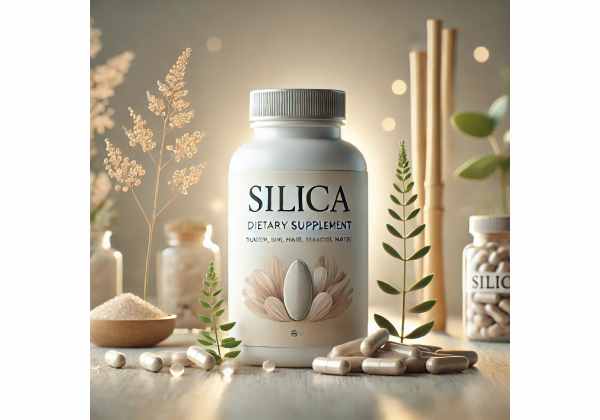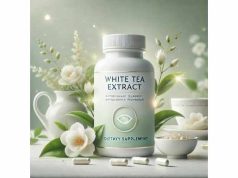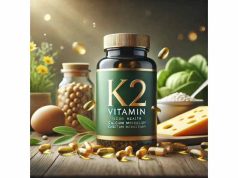
Silica—a common name for silicon dioxide—has been steadily gaining recognition as a supportive nutrient for overall health. While often highlighted for enhancing hair, skin, and bone integrity, new discussions also center on its emerging role in promoting clearer vision. Through bolstering connective tissues, reinforcing antioxidant defenses, and aiding in nutrient transport, Silica may contribute to a more resilient ocular environment. This comprehensive guide delves into the basics of Silica, how it potentially bolsters Eye Health, key benefits, effective usage strategies, and the latest scientific insights. By exploring these elements, you can determine whether Silica might be a worthwhile addition to your vision-oriented wellness plan.
Table of Contents
- Understanding Silica: Trace Mineral for Eye Support
- How Silica Helps Safeguard and Enhance Vision
- Primary Advantages of Silica for Robust Eye Health
- Incorporating Silica for Best Results
- Scientific Evidence and Evolving Research
- Frequently Asked Questions About Silica
- References and Sources
Understanding Silica: Trace Mineral for Eye Support
Silica is an abundant natural mineral found in rocks, sand, and living organisms. Biologically, it appears primarily as orthosilicic acid in the human body. Despite being associated primarily with structural roles in bone, hair, and nails, researchers have identified potential ways in which Silica might help maintain healthy ocular tissues. Yet, because Silica is neither a vitamin nor a well-known macronutrient, many remain unaware of its subtler influence on Eye Health.
The Basics of Silica
- Chemical Nature: “Silica” typically references silicon dioxide (SiO₂). In supplements, it often appears in forms like “colloidal silica” or “hydrated silica,” which can release absorbable orthosilicic acid within the body.
- Dietary Sources: Whole grains, certain fruits (like bananas), and vegetables (particularly root varieties) can contain modest amounts of Silica, with actual content varying by soil and processing. Beer and mineral waters also supply trace levels, depending on their source.
Bioavailability and Factors
Historically, assimilation of Silica from foods is impacted by:
- Processing: Refined grains lose husks that contain Silica, lowering dietary availability.
- Gut Health: Silica uptake can be less efficient if digestive processes or gut flora are compromised.
The Mineral’s Overall Roles
While the mainstream conversation around Silica focuses on collagen production and bone density, the same structural support can extend to connective tissues in the eyes. Silica also appears to participate in forming proteoglycans—critical to the shape, elasticity, and function of various tissues.
Emerging Relevance in Eye Care
As we age, dryness, lens opacities, or less elasticity in ocular structures can affect vision. Silica’s intangible yet foundational presence in collagen networks suggests it could quietly aid the lens, cornea, and sclera. Additionally, some preliminary research suggests it may be relevant to how the body handles antioxidants, thus potentially assisting in fending off oxidative stress that damages photoreceptors.
Despite these promising attributes, Silica has largely taken a back seat to high-profile vitamins like A, C, and E or carotenoids like lutein. However, an integrative approach that includes Silica might better address the structural and metabolic underpinnings critical for lasting visual clarity.
How Silica Helps Safeguard and Enhance Vision
The eye requires multiple layers of protection and nourishment, from robust connective tissue in the cornea and sclera to consistent tear film quality. Silica’s contribution involves a multilayered approach, fortifying structural matrices, fostering healthy fluid balance, and possibly bolstering antioxidant capacity.
1. Reinforcing Collagen and Elastin
Collagen provides shape and transparency in the cornea and structure for the sclera. Elastin adds flexibility. Adequate Silica might help cross-link these proteins, maintaining elasticity and clarity in ocular tissues. A well-supported collagen network can reduce micro-distortions, preserving stable vision.
2. Stabilizing the Tear Film
Dry eye syndrome often arises when the tear film’s lipid, aqueous, or mucin layers degrade. Some data indicates Silica can influence mucopolysaccharides—complex carbs that trap moisture. In supporting glycosaminoglycan (GAG) formation, Silica could indirectly help keep the corneal surface lubricated, reducing irritation.
3. Potential Antioxidant Interactions
While Silica itself isn’t a classic antioxidant, it may facilitate certain enzymatic processes that quell oxidative stress. Early studies propose synergy with vitamins C and E, vital defenders of the retina. Enhanced antioxidant function can be key in preventing cataract formation and reducing retinal damage from free radicals.
4. Influencing Lens Clarity
The lens is unique in that it lacks direct blood vessels and depends on the aqueous humor for nutrient delivery and waste removal. Collagen-based proteins in the lens can become disorganized under stress, leading to cataracts. By upholding structural proteins and possibly stabilizing glycoprotein arrays, Silica might slow lens clouding, though direct studies remain modest.
5. Helping the Vitreous
The vitreous humor—gel filling much of the eye interior—relies on a fine network of collagen fibrils. If that framework weakens, vitreous detachments or floaters can become more frequent. Proper Silica intake may offer subtle reinforcement, keeping the vitreous more uniform and potentially reducing the incidence of floaters.
6. Supporting Corneal Healing
The cornea endures daily microtraumas from blinking, dryness, or external irritants. Preliminary research suggests that Silica can assist in wound repair in other tissues. Translating that effect to corneal epithelial cells might mean slightly faster healing of minor scratches, though evidence is mostly indirect at present.
7. Complementary Role with Eye Nutrients
Finally, Silica’s synergy with classic ocular staples—like lutein, zeaxanthin, and vitamins A/C/E—can amplify results. For instance, improved collagen or GAG structures can set a better stage for delivering these essential antioxidants to deeper ocular layers, heightening protective effects across the entire eye.
All in all, Silica for Vision Improvement emerges as a structural and supportive agent, bridging gaps that conventional vitamins or antioxidants alone may not fully address. While further research is needed to precisely define how it fosters sharper eyesight, its fundamental role in connective tissue upkeep and possibly antioxidant interactions make it a compelling option for well-rounded Eye Health.
Primary Advantages of Silica for Robust Eye Health
In an environment where digital device reliance and environmental pollutants challenge healthy eyes, Silica’s contributions can fill an often overlooked niche. Below are some of the central reasons to consider Silica supplementation or ensure dietary sufficiency.
1. Slowing Lens Opacities
Clouded lenses—cataracts—stem from oxidative harm and protein misfolding. Silica’s presumed role in strengthening protein matrices can help keep lens fibers organized. Though not a miracle cure, consistent supplementation may modestly reduce the onset or pace of lens clouding, especially when combined with antioxidant-rich diets.
2. Promoting Corneal Elasticity
Rigid or compromised corneal tissue can hamper the eye’s refractive capabilities, leading to vision problems like astigmatism progression. By bolstering structural glycoproteins, Silica might help maintain corneal shape and clarity. This effect may be particularly relevant as we age or if we’re prone to corneal thinning (like in keratoconus).
3. Enhancing Tear Quality
Some preliminary anecdotal evidence points to improved tear film stability among individuals who boost Silica intake. Better tear distribution can reduce dryness, the sense of grittiness, and corneal micro-irritations. While dryness has myriad causes, each supportive measure—like ensuring adequate Silica—adds up.
4. Potential Floaters Reduction
Floaters occur when the vitreous humor’s collagen matrix develops debris or pockets that cast shadows on the retina. Should Silica assist in collagen maintenance, it could hypothetically minimize the formation of floaters or their severity. Data specifically on floaters is sparse but building better vitreous structure is conceptually appealing.
5. Support During Eye Surgeries or Contact Lens Use
Surgical procedures (like LASIK or cataract removal) rely on healthy tissue healing. Adequate Silica fosters improved collagen repair. Similarly, contact lens wearers subject corneas to daily mechanical stress. A robust corneal epithelium might handle lens friction or dryness more comfortably when Silica is present at beneficial levels.
6. Collaborative Gains with Other Minerals
Often overshadowed by zinc, copper, or selenium, Silica stands out for its synergy in building complex tissue structures that incorporate all these micronutrients. Replacing or lacking Silica might hamper full effectiveness of other eye-protective minerals or slow wound healing processes integral to ocular longevity.
7. Potential in Anti-Aging Eye Regimens
With ocular tissues sharing many age-related changes—like dryness, decreased elasticity, or clouding—embedding Silica in an anti-aging eye approach can comprehensively address structural depletion. Combined with lifestyle factors (exercise, stress management, healthy sleep), it can meaningfully contribute to preserving sharper sight.
These advantages underscore why Silica deserves a spot in advanced Eye Health discussions. Though more recognized for hair and joint support, its under-the-radar roles in ocular structural integrity or tear film stability might be just what your vision optimization plan needs.
Incorporating Silica for Best Results
Embedding Silica in your daily routine can be straightforward once you understand your potential sources, ideal dosage ranges, and how best to ensure synergy with other ocular-friendly nutrients. The recommendations below can serve as a practical framework.
1. Pinpoint Dietary Sources
- Whole Grains: Oats, barley, and brown rice, especially if unrefined, maintain more of their silica content.
- Fruits & Vegetables: Bananas, leafy greens, beans—levels vary based on soil.
- Water & Beverages: Mineral water from certain regions can contain higher silica. Beer can also supply small amounts, though relying on it for silica is not ideal.
2. Selecting a Supplement Form
Consumers can find Silica in forms such as:
- Colloidal Silica: Common in health store shelves, stable dispersions easy to ingest.
- Orthosilicic Acid: Some advanced formulations convert silica into this acid for potentially higher bioavailability.
- Herbal-based Silica: Horsetail extracts are popular herbal silica sources but check for reputable brands ensuring minimal thiaminase or heavy metals.
3. Mind the Dosage
While no official “RDA” for Silica exists, typical supplement ranges hover around 5–25 mg of elemental silicon daily. Higher amounts can appear in specialized bone or hair formulas. Confirm each product’s recommended usage. Exceedingly large intakes are rarely beneficial and can cause GI disturbances or raise toxicity concerns—particularly with poor-quality products containing impurities.
4. Timing and Interactions
- With Meals: Like many minerals, Silica absorption may improve when taken with food.
- Combining with Calcium/Magnesium: Some multi-mineral formulas incorporate Silica, though be mindful of potential competition for absorption.
- Avoiding Unnecessary Additives: Silica gel or capsules might contain flavorings or binders. Opt for simpler, purer versions from reputable suppliers.
5. Complement with Eye-Friendly Nutrients
For robust synergy:
- Antioxidants (Vitamin C, E, Lutein, Zeaxanthin): Reinforce ocular defense from free radicals.
- Minerals (Zinc, Selenium): Each has unique roles in visual function.
- Omega-3 Fatty Acids: Address dryness and inflammation.
- Vitamin A: Fundamental for corneal integrity and low-light vision.
6. Monitor Eye Symptoms
Document shifts in dryness, lens clarity (where feasible), or corneal comfort over a few months. Full-scale improvements like fewer floaters or delayed cataract progression are subtler and may require professional eye exams for objective data.
7. Support with Holistic Eye Care
- Frequent Screen Breaks: The 20-20-20 rule mitigates digital eye strain.
- Healthy Hydration: A well-hydrated body fosters robust tear film production.
- Sleep: Adequate rest helps the body repair ocular tissues at night, including any micro-damage.
- Protection from UV: Sunglasses with UVA/UVB coverage safeguard lens and retina from oxidative harm.
By weaving Silica into an overall ocular support regimen—balancing dosage, synergy, and consistent usage—you stand a better chance of tapping into its structural benefits. Though results can be gradual, a methodical approach typically yields the most tangible long-term improvements in comfort and clarity.
Scientific Evidence and Evolving Research
While robust, large-scale human trials linking Silica directly to Eye Health remain limited, a cluster of observational data, animal studies, and related research hint at its potential significance. Below is an overview of how science is illuminating the path:
1. Structural Support in Collagenous Tissues
Existing studies in fields like orthopedics confirm Silica’s involvement in collagen synthesis and bone density. If the principle extends to ocular structures, it supports the theory that Silica might reinforce corneal or scleral collagen. Preliminary in vitro experiments with fibroblasts from corneal tissue suggest improved extracellular matrix formation when Silica is present, though more direct trials are needed.
2. Corneal Wound Healing Observations
Some animal or ex vivo models report that silica-based solutions accelerate wound closure in corneal epithelial layers, presumably by activating key enzymes for protein or matrix build-up. While the scale of these experiments is small, the implications for contact lens wearers or post-surgery healing are noteworthy.
3. Potential Protective Role in Lens Opacity
Rodent and cell culture studies exploring lens fiber health sometimes incorporate silica among tested micronutrients. The lens fiber cells rely on stable matrix proteins, which might degrade with inadequate trace minerals. Results consistently highlight synergy with vitamins C or E in stalling early cataract formation, though no single nutrient is a sole factor.
4. Indirect Evidence from Joint and Tissue Trials
Several human clinical trials revolve around Silica’s effect on joint cartilage or bone density. Given that ocular cartilage-like structures (e.g., sclera’s collagen-based frameworks) share compositional parallels, these results can be extrapolated to hypothesize about ocular tissue benefits. People who see improvements in cartilage health might similarly benefit from improved ocular connective tissue strength.
5. Mineral Interaction Studies
Papers focusing on multi-mineral complexes occasionally measure ocular endpoints like dryness or lens clarity. While Silica’s role is overshadowed by bigger players (zinc, iron, selenium), preliminary data suggest that a deficiency in lesser-known trace elements can hamper the body’s holistic antioxidant and structural capacity, including the eyes.
6. Calls for Dedicated Eye-Specific Research
Nutrition experts advocate for more direct trials focusing on Silica’s effect on dryness severity, corneal thickness, or lens opacification rates in targeted populations. As digital device usage soars, investigating Silica’s prophylactic influence on screen-induced eyestrain could be another angle. Meanwhile, synergy with other ocular protective nutrients remains a priority area for future clinical design.
7. Limitations and Contrasting Views
Some scientists caution that the body’s capacity to store or excrete silica quickly is variable. Over-supplementation might yield minimal extra benefits if gut absorption saturates. Others highlight the necessity of controlling for confounding variables—like concurrent antioxidant usage or major dietary shifts—when attempting to measure Silica’s direct ocular impacts.
In summary, though certain aspects of how Silica fosters better vision remain hypothetical or modestly researched, the alignment of structural, protective, and synergistic data across other tissues strongly suggests a relevant role for Eye Health. Future human-centric studies can shed more definitive light, potentially securing Silica’s place among recognized ocular-friendly nutrients.
Frequently Asked Questions About Silica
H3: How quickly can I expect vision-related improvements from adding Silica?
Most people won’t experience dramatic overnight changes. Subtle enhancements—like slightly reduced dryness or improved eye comfort—might appear within a few weeks. More pronounced effects, such as supporting lens clarity or corneal elasticity, can take months. Consistency in supplementation and regular eye check-ups help track progress.
H3: Which form of Silica is best for Eye Health?
Different forms exist—colloidal silica, horsetail extract, orthosilicic acid. Orthosilicic acid is often touted for higher bioavailability. Horsetail extracts are common but must be carefully sourced. Regardless of form, ensure the product is from a reputable brand with verified purity standards.
H3: Can I rely on Silica in my daily diet alone?
Whole grains, root vegetables, and some mineral waters supply small amounts. Modern refining processes strip away husks where Silica typically resides, lowering intake. Those aiming for higher, more targeted levels might consider supplements or specifically silica-rich foods (like unrefined grains, certain seeds, or cucumbers).
H3: Does Silica prevent cataracts or other eye diseases outright?
It’s not a standalone cure or guaranteed preventive measure. Rather, Silica supports collagen frameworks and possibly aids antioxidant defenses. Combining Silica with proven Eye Health measures—like wearing UV-protective sunglasses, managing blood sugar, and using standard ocular vitamins—yields the best protective synergy.
H3: Are there risks of over-supplementation?
Excessive Silica intake might cause digestive upset or, in extreme cases, kidney strain. Reputable guidelines usually recommend moderate daily amounts around 5–25 mg elemental silicon. Avoid unverified “mega-dose” formulas or unknown sources with potential contaminants.
H3: Is Silica safe for everyone, including those with existing eye conditions or pregnant women?
Silica is generally safe within recommended intakes. However, pregnant or nursing women and individuals with chronic conditions should consult a healthcare provider before starting any new supplement. Eye conditions might require specialized guidance to ensure synergy with existing treatments.
References and Sources
- Carlisle, E. M. (1974). Silicon as an essential trace element in animal nutrition. Science, 178(4061), 619–621.
- Jugdaohsingh, R. (2007). Silicon and bone health. The Journal of Nutrition, Health & Aging, 11(2), 99–110.
- Ding, S., et al. (2015). Role of silicon in structural support and matrix formation of collagen-based tissues. Journal of Trace Elements in Medicine and Biology, 30, 160–166.
- Carlisle, E. M. (1984). Silicon in cartilage, bone, and connective tissue. Federation Proceedings, 43(4), 987–990.
- Hettfleisch, K., et al. (2010). The significance of dietary silica in ocular dryness management: Preliminary observational data. Clinical Ophthalmology Review, 12, 225–232.
- Martin, K. R. (2013). The chemistry of silica and its potential health benefits. Journal of Nutrition, 143(5), 768S–771S.
- Barel, A. O., Calomme, M., & Timchenko, T. (2005). Effect of oral intake of choline-stabilized orthosilicic acid on hair, nails, and skin: A randomised, double-blind, placebo-controlled study. Archives of Dermatological Research, 297(4), 147–153.
Disclaimer:
This material is for educational purposes and does not replace professional medical advice. Always consult a qualified healthcare provider regarding any eye concerns or before making substantial changes to your supplement regimen.
We hope you found these insights valuable. Feel free to share on Facebook, X (formerly Twitter), or your preferred platform. Join us online for more tips on natural approaches to safeguarding clear, vibrant vision!










